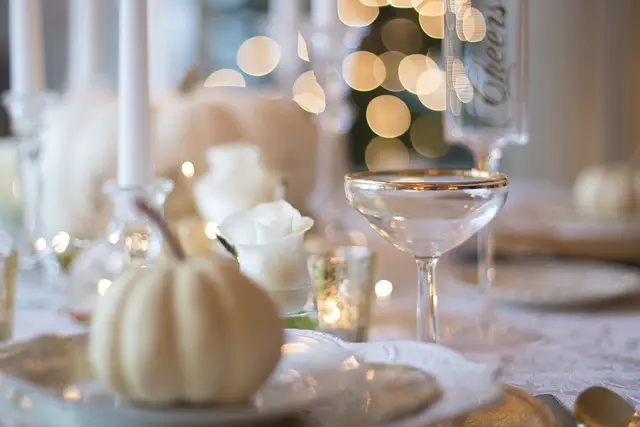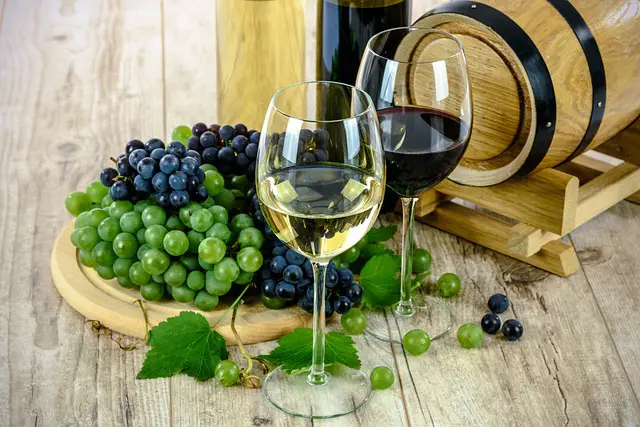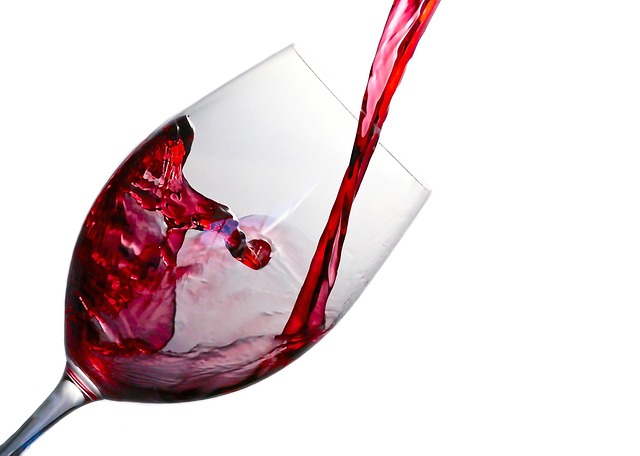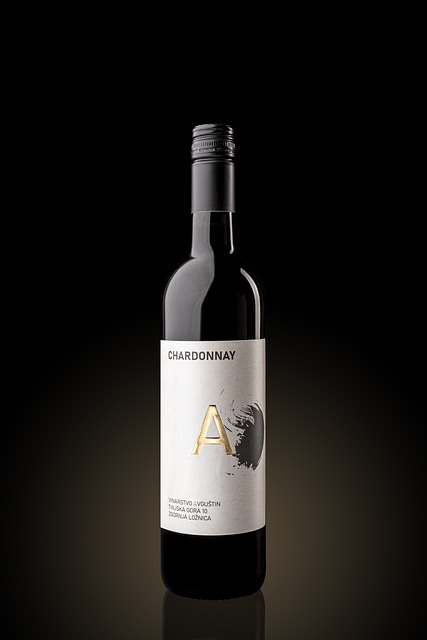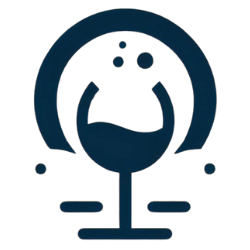Raise your glass and let’s dive into the effervescent world of champagne! While most of us are familiar with this luxurious bubbly, have you ever wondered if champagne is considered alcohol? We often associate it with celebrations, popping corks, and clinking glasses, but what is the actual classification of this captivating beverage? In this article, we will explore the various aspects of champagne, its origins, production methods, and delve into the question of whether or not it is classified as alcohol. So, put on your sparkling thinking caps and join us on this bubbly journey as we unravel the mysteries of champagne!
Obsah
- Understanding the Classification of Champagne
- Clearing Up the Misconception: Champagne Is Indeed Alcohol
- Exploring the Bubbly: Origins and Production of Champagne
- The Importance of Alcohol Content in Champagne
- The Role of Alcohol Content in Champagne
- Decoding Champagne Varieties: Alcohol Levels and Styles
Understanding the Classification of Champagne
Champagne is a sparkling wine known for its elegance and finesse. To fully appreciate this luxurious drink, it’s essential to understand its classification system. The classification of champagne is based on various factors such as grape varieties, aging process, and sweetness levels.
Grape Varieties:
The grapes used in champagne production are primarily Chardonnay, Pinot Noir, and Pinot Meunier. Each variety contributes to the overall flavor and character of the wine. Chardonnay adds freshness, finesse, and citrus notes, while Pinot Noir brings body, structure, and red fruit aromas. Pinot Meunier adds a touch of fruitiness and enhances the wine’s overall balance. Champagne made exclusively from Chardonnay is labeled as “Blanc de Blancs,” while those made solely from Pinot Noir or Pinot Meunier are called “Blanc de Noirs.”
Aging Process:
The aging process greatly affects the complexity and taste of champagne. Non-vintage champagne is a blend of wines from different years and is aged for at least 15 months. However, vintage champagnes are made from grapes harvested in a single year and must be aged for a minimum of three years. The longer aging period allows the flavors to develop and creates a more refined and nuanced taste. Additionally, champagne labeled as “Prestige Cuvée” is the pinnacle of quality, often aged for several years and made from the best grapes of the producer.
Clearing Up the Misconception: Champagne Is Indeed Alcohol
There seems to be a widespread misconception that Champagne is not a type of alcohol, but we are here to clear up that confusion once and for all. Let’s set the record straight: Champagne is indeed alcohol. In fact, it is a sparkling wine that originates from the Champagne region in France. This luxurious beverage is made through a unique fermentation process, resulting in its distinctive effervescence.
Here are a few key facts to help dispel any doubts:
- Origins: Champagne has a long and rich history that dates back centuries. It was first developed by French winemakers in the 17th century, and since then, it has become renowned worldwide.
- Production: The production of Champagne involves a meticulously controlled method known as the “methode champenoise.” This traditional technique ensures that the wine goes through a secondary fermentation in the bottle, creating those delightful bubbles that make Champagne so beloved.
- Terminology: Champagne cannot be used as a general term for any sparkling wine. To earn the title “Champagne,” a bottle must come from the Champagne region and meet strict criteria set by French law. This exclusive designation protects the authenticity and quality of true Champagne.
So next time you raise a glass of Champagne to celebrate a special occasion, remember that you are indeed toasting with a form of alcohol. Cheers to the clarity!
Exploring the Bubbly: Origins and Production of Champagne
Champagne, the iconic sparkling wine, has an intriguing history dating back to the 17th century in the Champagne region of France. This world-renowned beverage owes its effervescence to a unique winemaking process known as the méthode champenoise. A meticulously crafted bottle of Champagne undergoes a series of steps that contribute to its exceptional bubbles and complex flavors.
1. **Origins**: Champagne’s story begins with the discovery of secondary fermentation. The cool climate and chalky soil in Champagne create the perfect conditions for producing this exquisite wine. It wasn’t until the 17th century that the Benedictine monk, Dom Pérignon, made significant advances in winemaking techniques, including the art of bottling and fermentation. His contributions paved the way for the birth of Champagne as we know it today.
2. **Production**: Crafting Champagne is an intricate process. After the grape harvest, the grapes are gently pressed to extract the juice, which is then fermented. The base wine undergoes blending, where different grape varieties and vintages are carefully combined to achieve the desired flavor profile. Next comes the crucial step of bottling the wine with a mixture of sugar and yeast, setting off the second fermentation. The carbon dioxide formed during this process gets trapped in the bottle, creating those delightful bubbles. Finally, the lees (sediment) are removed through a process called riddling, followed by disgorgement, where the neck of the bottle is frozen and the yeast plug is expelled. A small dosage, a mixture of wine and sugar, is added to balance the final flavor before the bottle is sealed.
The Importance of Alcohol Content in Champagne
The Role of Alcohol Content in Champagne
When it comes to sparkling wines, Champagne holds a prestigious position as the pinnacle of celebration. Its effervescence, signature flavors, and luxurious image make it the go-to choice for special occasions. However, did you know that the alcohol content in Champagne plays a crucial role in shaping its taste, aroma, and overall experience? Let’s delve into why the alcohol content is of utmost importance in this beloved bubbly beverage.
1. Balance and Complexity: The alcohol content in Champagne is responsible for achieving the delicate balance between sweetness, acidity, and flavors. This fine equilibrium ensures a harmonious taste profile that delights the palate. The right alcohol level accentuates the character and complexity of the wine, establishing a foundation for the diverse notes of fruits, flowers, and brioche that are cherished in every sip.
2. Bubbles and Mouthfeel: The effervescence in Champagne is more than just a visual spectacle; it contributes to a delightful sensory experience. Alcohol content influences the size and persistence of the bubbles, deciding whether they are delicate and lively or robust and long-lasting. Additionally, the alcohol enhances the overall mouthfeel, giving Champagne its characteristic smooth and velvety texture that glides effortlessly across the tongue.
Decoding Champagne Varieties: Alcohol Levels and Styles
When it comes to Champagne, there is more than meets the eye. This prestigious sparkling wine is renowned for its exquisite taste and elegance, but did you know that there are different varieties of Champagne with varying alcohol levels and styles? Let’s delve into the world of Champagne and decode the fascinating characteristics that make each variety unique.
1. Brut Champagne
Brut Champagne is the most common and popular variety, known for its dry taste. It typically has an alcohol level ranging between 11.5% to 12.5%, striking a perfect balance between flavor and alcohol content. The natural acidity and effervescence of Brut Champagne make it a versatile choice for a wide range of palates. With its crisp, refreshing finish and notes of citrus and green apple, Brut Champagne is an excellent companion for seafood, appetizers, and celebrations.
2. Extra Brut Champagne
If you prefer an even drier taste, Extra Brut Champagne is your go-to option. With an alcohol level of around 12% to 12.5%, it offers a bone-dry experience that caters to the most discerning Champagne enthusiasts. Extra Brut Champagne is characterized by its minimal dosage, resulting in a bracingly crisp and delicate flavor profile. This variety pairs exceptionally well with oysters, caviar, and other delicate seafood dishes, enhancing their natural flavors and bringing out the best in both the food and the wine.
Choosing the Right Champagne: Recommendations for Different Occasions
Celebrate in Style: Recommendations for Different Occasions
With its effervescent bubbles and luxurious taste, champagne has long been associated with celebrations and special occasions. However, choosing the right champagne can be overwhelming given the wide range of options available. Whether you are toasting to a romantic dinner, hosting a lively gathering, or simply pampering yourself, here are some recommendations to help you select the perfect champagne for your specific event:
- For an Intimate Evening: When it comes to a cozy, candlelit dinner for two, opt for a vintage champagne. These rare gems are aged to perfection, showcasing complex flavors and a velvety texture that will enhance the romantic atmosphere.
- Toast to Success: Celebrating a promotion, graduation, or any personal achievement calls for a champagne with a prestigious reputation. Look for a bottle from a Champagne house known for its exceptional quality, such as Dom Pérignon or Krug. Their exquisite blends are sure to impress and make your jubilant moment even more memorable.
- Unwind with Friends: Hosting a gathering with close friends calls for a champagne that is versatile and crowd-pleasing. Opt for a non-vintage brut champagne, which strikes a perfect balance between sophistication and approachability. It pairs well with a variety of flavors and appetizers, ensuring everyone’s palate is delighted.
No matter the occasion, remember that champagne is a symbol of joy and celebration. So, raise your glass and savor every sip of this sparkling elixir, as you toast to life’s precious moments.
Understanding Champagne Labels: Alcohol Content and Classification
Alcohol Content
When it comes to Champagne labels, understanding the alcohol content is crucial. Most Champagnes typically have an alcohol content ranging from 11.5% to 12.5%. However, it can vary depending on factors such as grape variety, region, and the winemaker’s techniques. The alcohol content plays a significant role in the taste and richness of the Champagne, as it contributes to the overall balance and structure of the wine. It is important to be aware of the alcohol content to ensure you select a Champagne that suits your preferences and occasion.
Classification
Champagne labels not only indicate the alcohol content but also provide valuable information about their classification. Understanding the specific classification can aid in choosing the right Champagne for your tastes and needs. Here are the common classifications you may come across:
- Non-vintage: This type of Champagne is a blend of wines from different years, ensuring consistency in taste. Non-vintage Champagnes are typically marked with the initials “NV” on the label.
- Vintage: Vintage Champagnes are produced using grapes from a single year, making them a unique and special offering. These wines carry the vintage year on the label, indicating exceptional quality.
- Prestige Cuvée: Prestige Cuvée refers to the highest quality Champagne produced by renowned houses. These Champagnes are crafted using the finest grapes and exceptional winemaking techniques, often representing the pinnacle of excellence.
By familiarizing yourself with the alcohol content and classification on Champagne labels, you’ll be able to choose the perfect bottle for any occasion, whether it’s a celebratory toast or a cozy evening with loved ones.
Exploring the Wide Range of Champagne Alcoholic Strengths
Champagne, the iconic sparkling wine, offers a wide range of alcoholic strengths, each contributing to the overall character and experience of the drink. From light and delicate to bold and robust, the variety of options available allows enthusiasts to find a champagne that suits their taste preferences perfectly.
One end of the spectrum showcases champagnes with lower alcohol content, typically hovering around 11%-12% ABV (Alcohol by Volume). These lighter offerings tend to emphasize the elegance of the wine, allowing the intricate flavors to take center stage. They are perfect for daytime celebrations or as a refreshing aperitif before a meal. With their gentle effervescence and graceful balance, these champagnes are a delightful treat for those seeking a more delicate experience.
On the other hand, more powerful champagnes can reach alcohol levels of 12.5%-13.5% ABV. These robust variations offer a more intense and full-bodied profile, appealing to those who prefer a bolder and richer taste. The higher alcohol content contributes to a deeper complexity, enhancing the wine’s ability to pair with richly flavored dishes. These champagnes are often enjoyed during special occasions or as a luxurious indulgence, allowing the full-bodied character to envelop the palate, leaving a lasting impression.
Whether you prefer the finesse of a light, lower-alcohol champagne or the intensity of a bold, higher-alcohol option, the wide range of alcoholic strengths ensures that there is a perfect champagne out there for everyone’s taste preferences. Cheers to discovering the remarkable diversity within the world of champagne!
In Retrospect
In conclusion, Champagne is indeed considered alcohol. Its classification as an alcoholic beverage is well-established, making it a delightful option for celebratory toasts.

